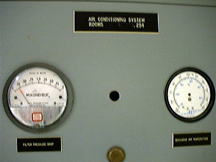Common Logic (ISO 24707)
 In 2000, Grüninger convened a working group with the mandate of combining
the Knowledge Interchange Format and Conceptual Graphs to create
an international standard.
The project was named Common Logic,
and between 2000 and 2003, he served as project editor.
In 2000, Grüninger convened a working group with the mandate of combining
the Knowledge Interchange Format and Conceptual Graphs to create
an international standard.
The project was named Common Logic,
and between 2000 and 2003, he served as project editor.
In 2007, Common Logic was officially published as an
International Standard with the name ISO 24707
by Working Group 2 Metadata of
Sub-committee 32 Data Management and Interchange
Joint Technical Committee 1
of the International Organization of Standardization.
The purpose of the Common Logic was to specify a family of logic languages
designed for use in the representation and interchange of knowledge among
disparate computer systems. Languages in the family have a declarative
model-theoretic semantics, so that it is possible to understand the meaning
of expressions in these languages without appeal to an interpreter for
manipulating those expressions.
Languages in the family are logically
comprehensive, with the ability to express arbitrary sentences in
first-order logic. Common Logic can therefore be used to support the
representation of knowledge in ontologies and knowledge bases, as well as
the specification of expressions that are the input or output to automated
reasoning systems such as theorem provers and constraint satisfaction
systems.
Common Logic is the language used to specify the axioms of the
Process Specification Language. Numerous editors and theorem provers
have been implemented to support it.
<<back to projects
|